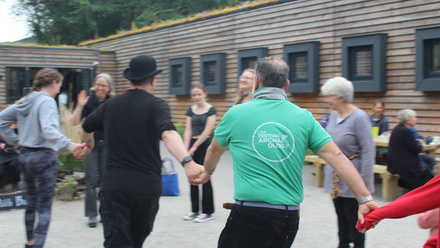Antiquity Journal - access the latest research for free during the Festival
Antiquity is a leading peer-reviewed journal of world archaeology. First published in 1927, we feature original archaeological research on all periods and regions intended for a professional but non-specialist readership. We offer four main article formats: Research, Method, Debate and Project Gallery articles. All submissions are subject to peer review and submissions must demonstrate innovative approaches or novel results of international interest and significance.
The journal is published six times a year, in partnership with Cambridge University Press. Antiquity is owned by the Antiquity Trust, a registered charity, with the editorial office based in the Department of Archaeology at Durham University, UK. We welcome formal submissions from archaeologists based in universities, museums, and cultural heritage organisations around the world; we particularly encourage the submission of manuscripts by ECRs and by scholars based in under-represented regions. We also welcome informal enquiries about the suitability of topics and suggestions for special sections.
For the 2022 Festival of Archaeology Antiquity have made a number of their articles free to access. Follow the links below to discover some of the latest archaeological research from the UK and around the world.
Beyond Walls: Reassessing Iron Age and Roman Encounters in Northern Britain - Manuel Fernández-Götz, Dave Cowley, Derek Hamilton, Ian J. Hardwick & Sophie McDonald. Visit https://doi.org/10.15184/aqy.2022.47
Weight regulation in British Bronze Age gold objects: a reanalysis and reinterpretation – Raphael Hermann. Visit https://doi.org/10.15184/aqy.2021.54
Masters and apprentices at the Chapel of Hatshepsut: towards an archaeology of ancient Egyptian reliefs - Anastasiia Stupko-Lubczynska. Visit https://doi.org/10.15184/aqy.2021.103
The sacred pool of Ba’al: a reinterpretation of the ‘Kothon’ at Motya - Lorenzo Nigro. Visit https://doi.org/10.15184/aqy.2022.8
Iconographic evidence of hybridisation between Camelus bactrianus and Camelus dromedarius at second-century AD Hatra, Iraq - Massimo Vidale, Stefania Berlioz & Rowaed Mohammed. Visit https://doi.org/10.15184/aqy.2021.169
Migration and community in Bronze Age Orkney: innovation and continuity at the Links of Noltland - Hazel Moore, Graeme Wilson, Mairead Ni Challanain, Maeve McCormick, Peter D. Marshall, Katharina Dulias, M. George B. Foody, Pierre Justeau, Maria Pala, Martin B. Richards & Ceiridwen J. Edwards. Visit https://doi.org/10.15184/aqy.2021.185
Mapping Karakorum, the capital of the Mongol Empire - Jan Bemmann, Sven Linzen, Susanne Reichert & Lkh. Munkhbayar. Visit https://doi.org/10.15184/aqy.2021.153
The Sutton Hoo lyre and the music of the Silk Road: a new find of the fourth century AD reveals the Germanic lyre’s missing eastern connections - Gjermund Kolltveit. Visit https://doi.org/10.15184/aqy.2021.164
Keeping time at Stonehenge - Timothy Darvill. Visit https://doi.org/10.15184/aqy.2022.5
Volcanic climate forcing, extreme cold and the Neolithic Transition in the northern US Southwest - R.J. Sinensky, Gregson Schachner, Richard H. Wilshusen & Brian N. Damiata. Visit https://doi.org/10.15184/aqy.2021.19
Contact details
Adam
Antiquity Trust






